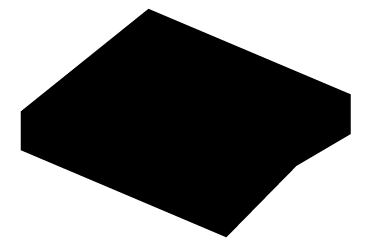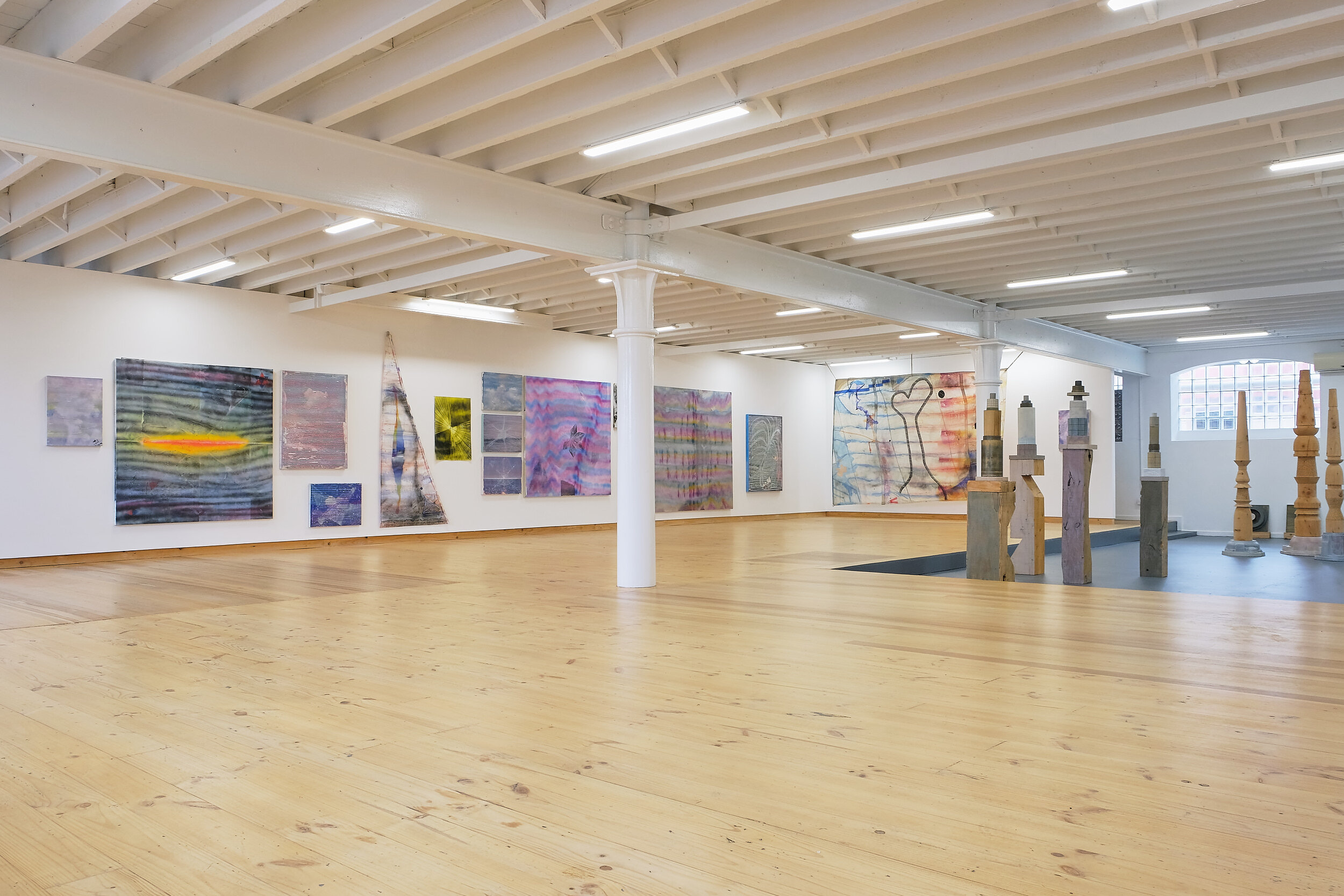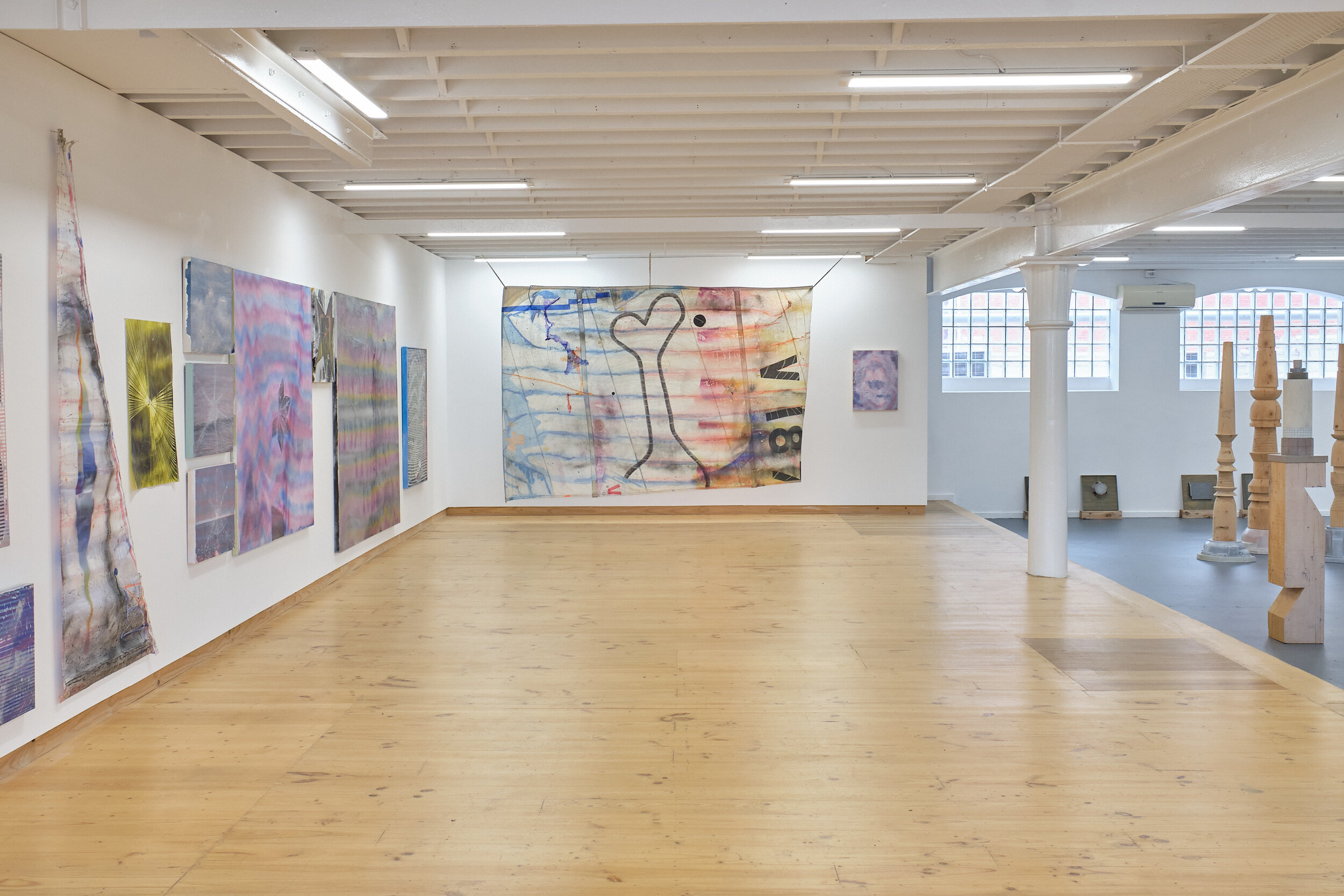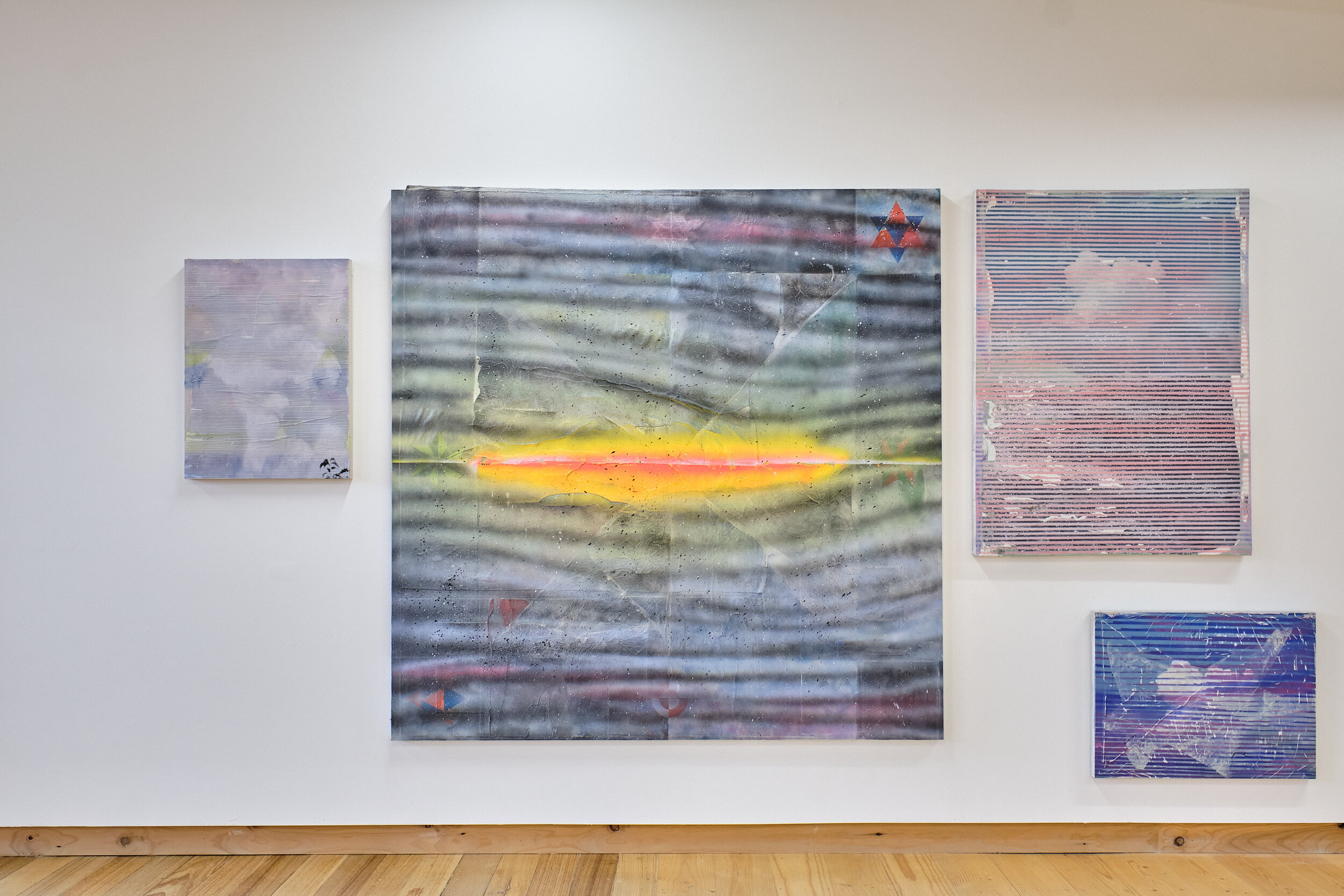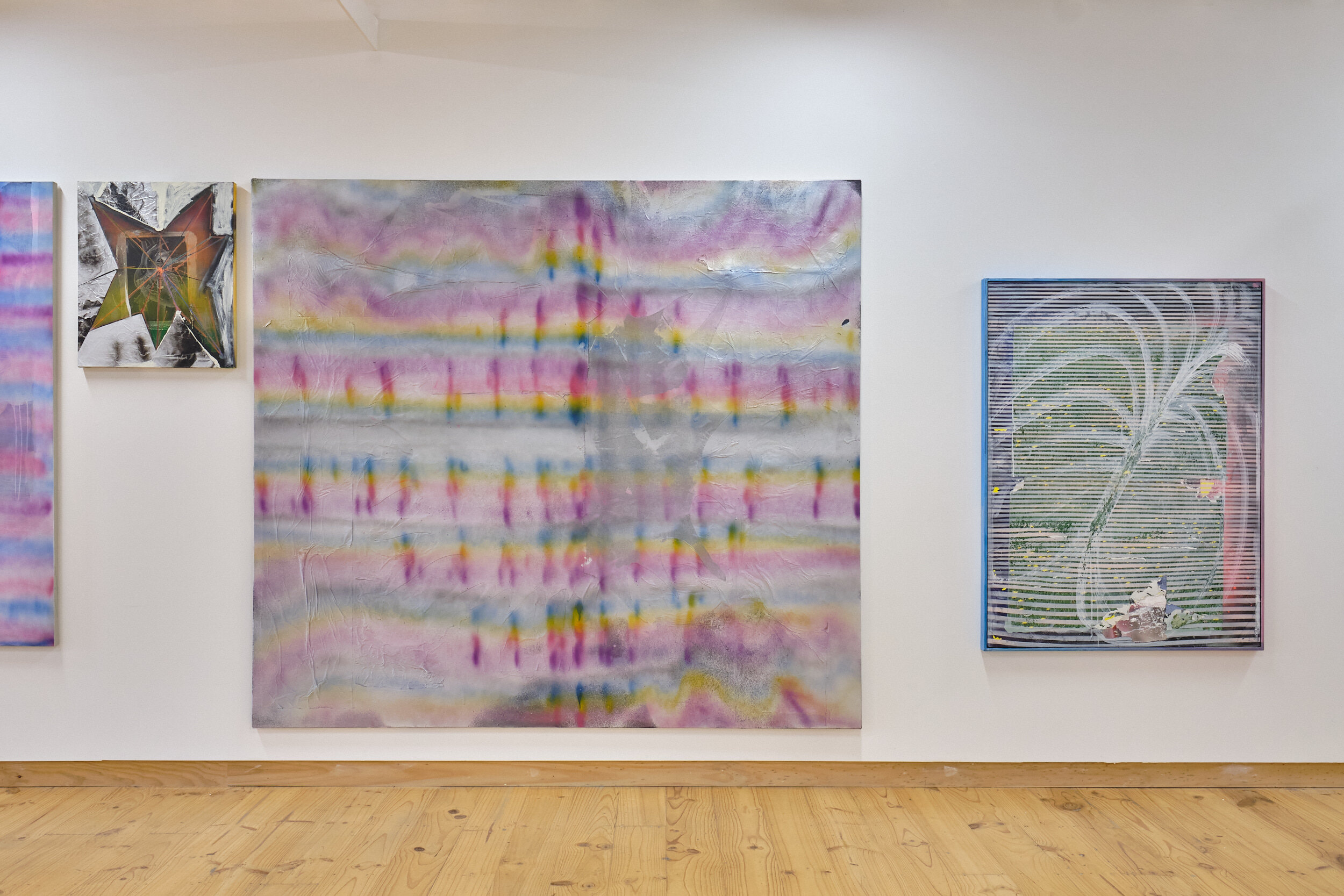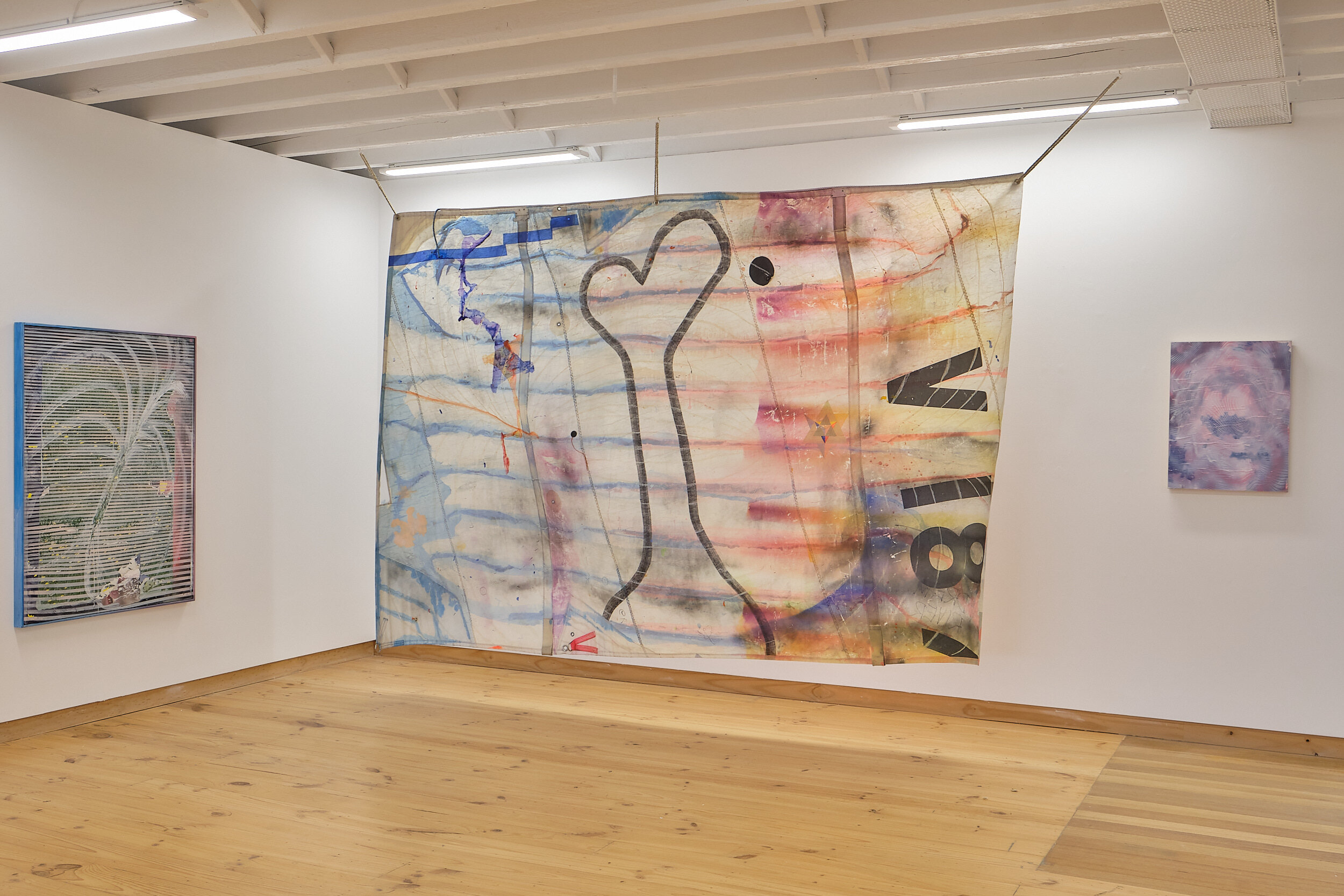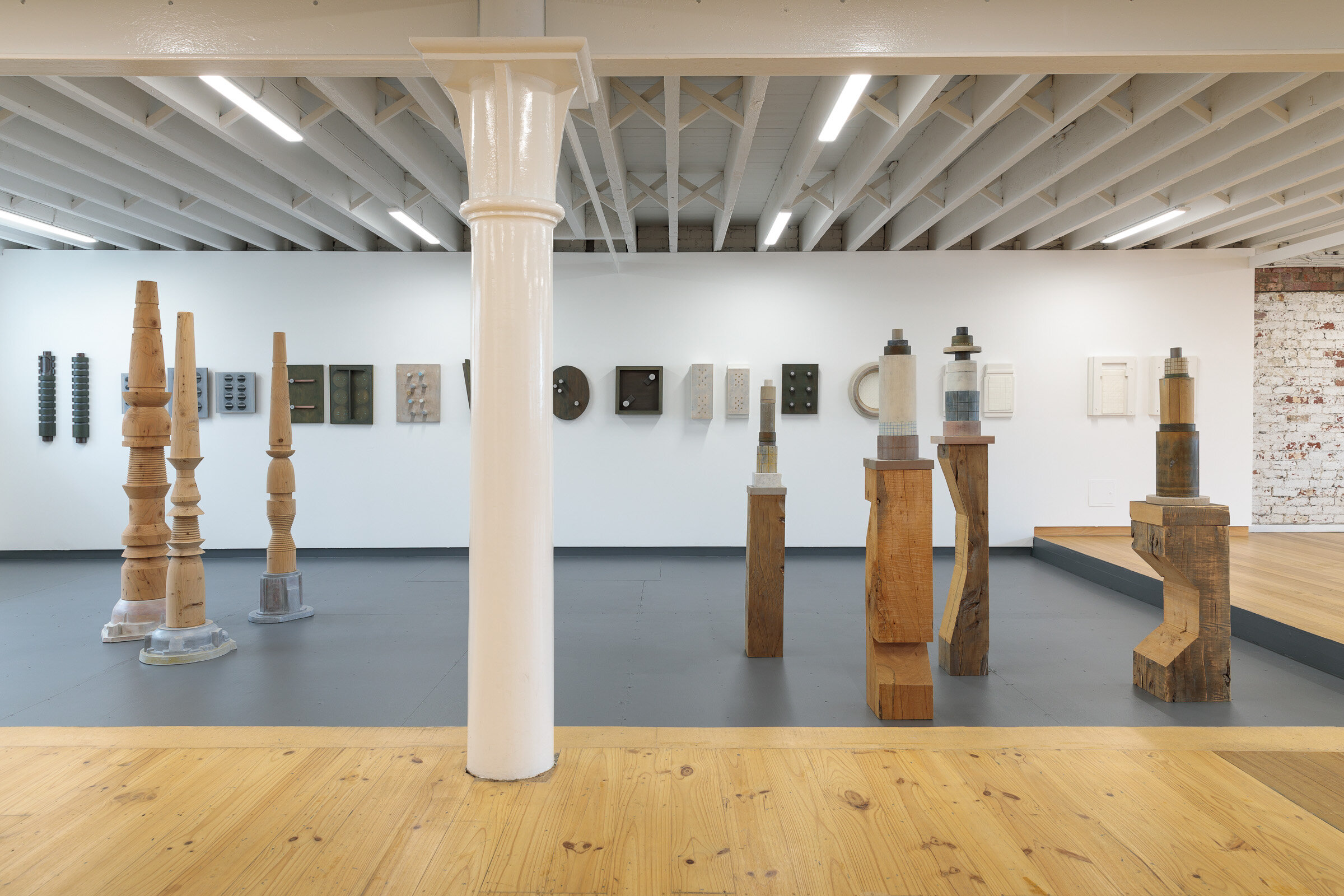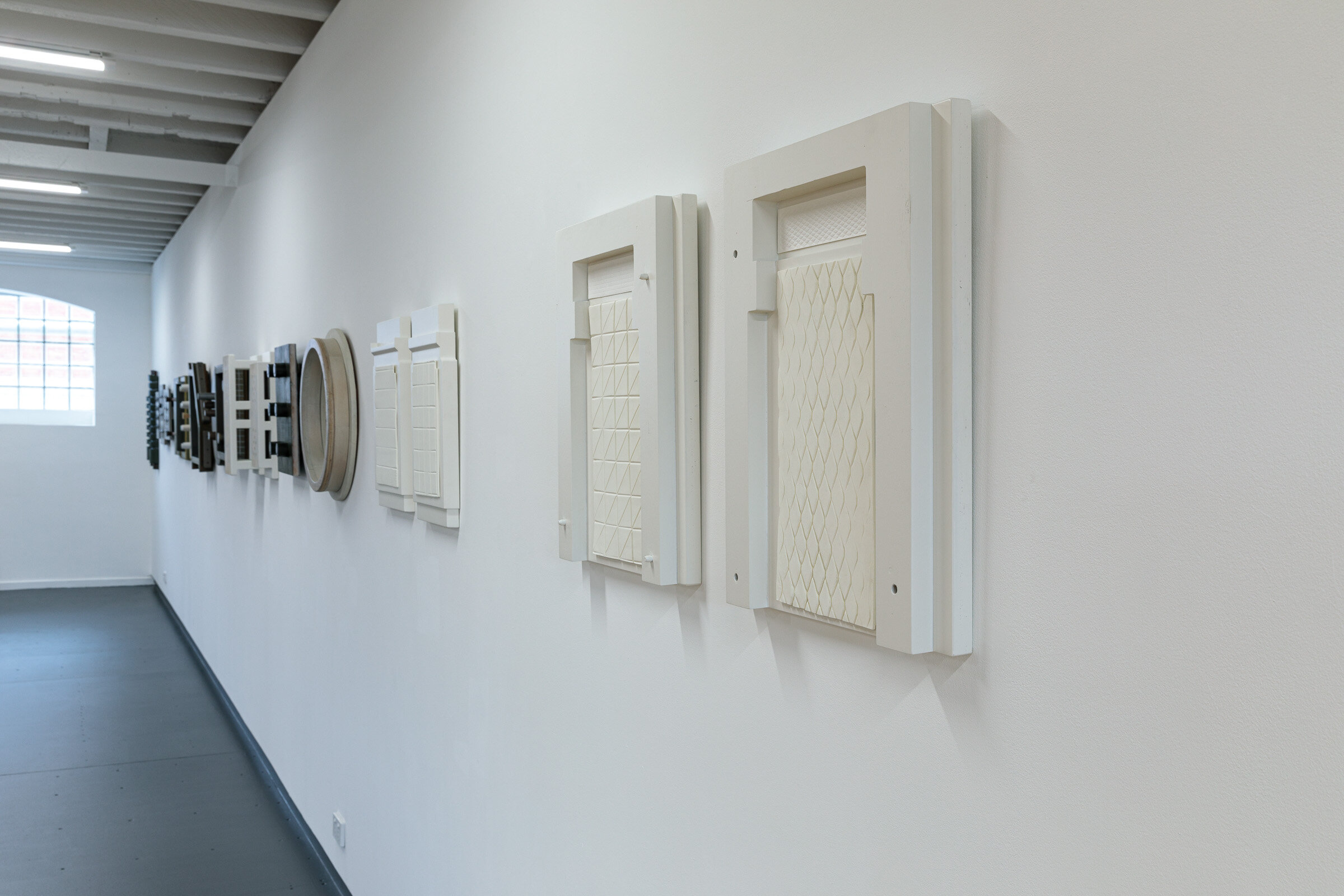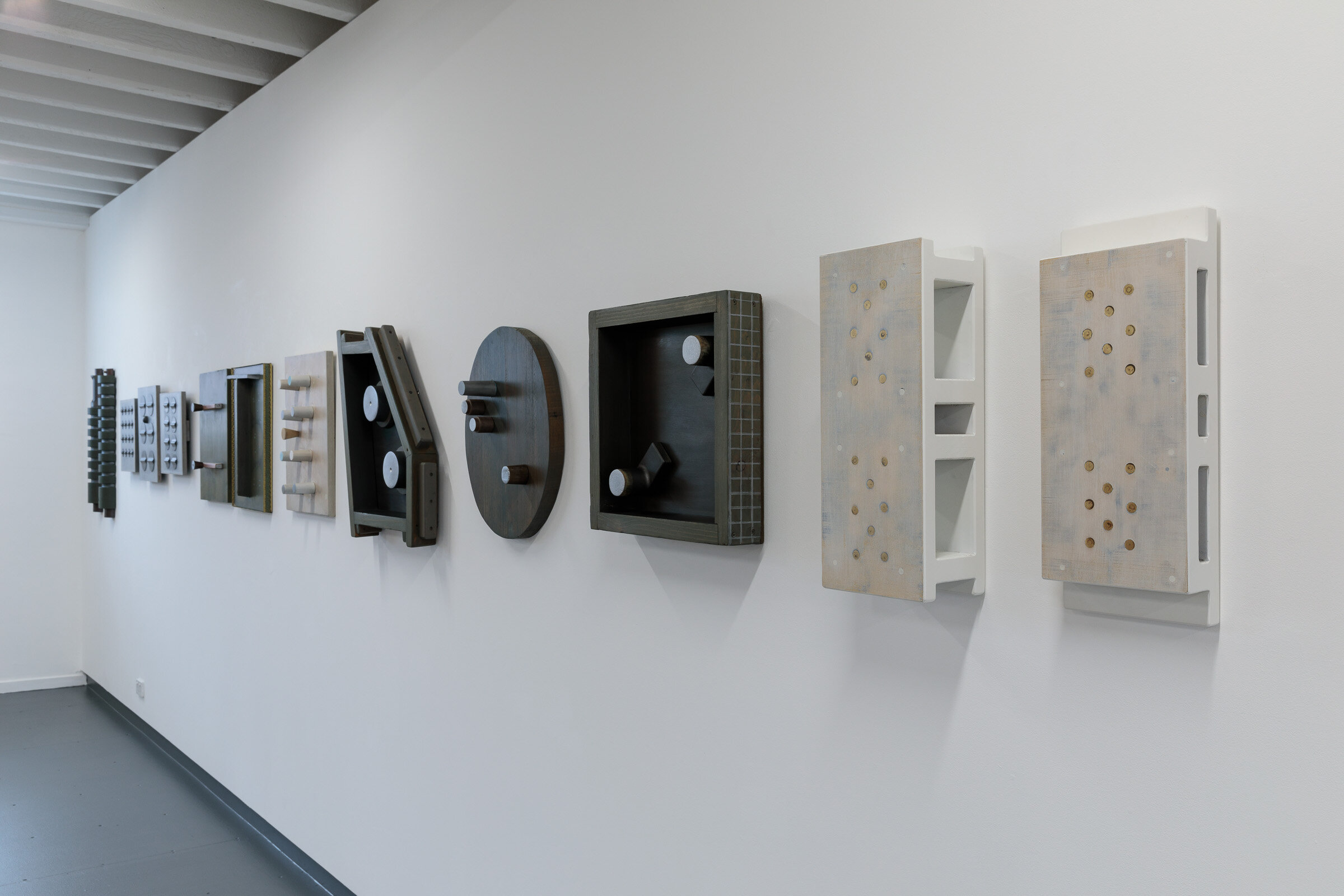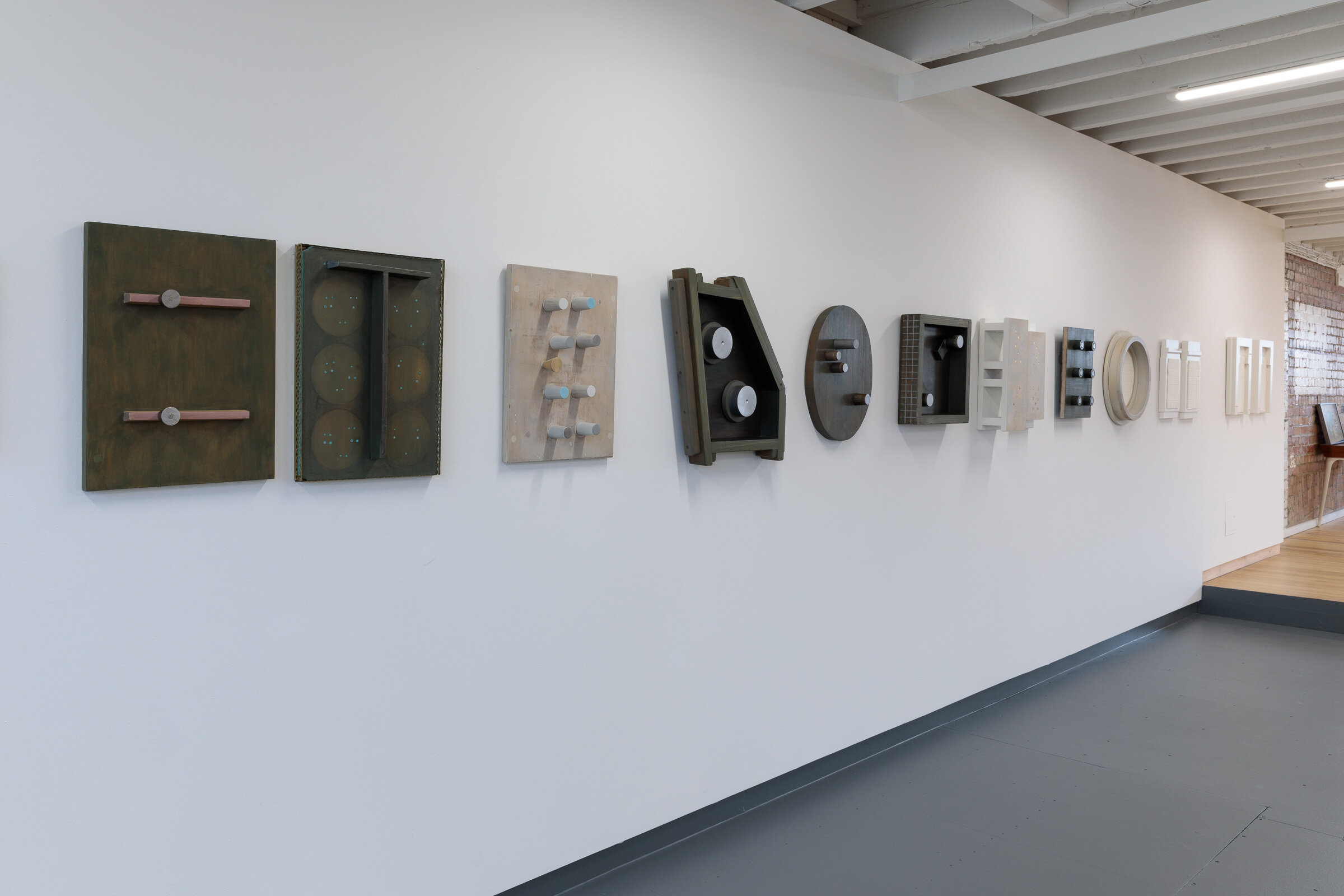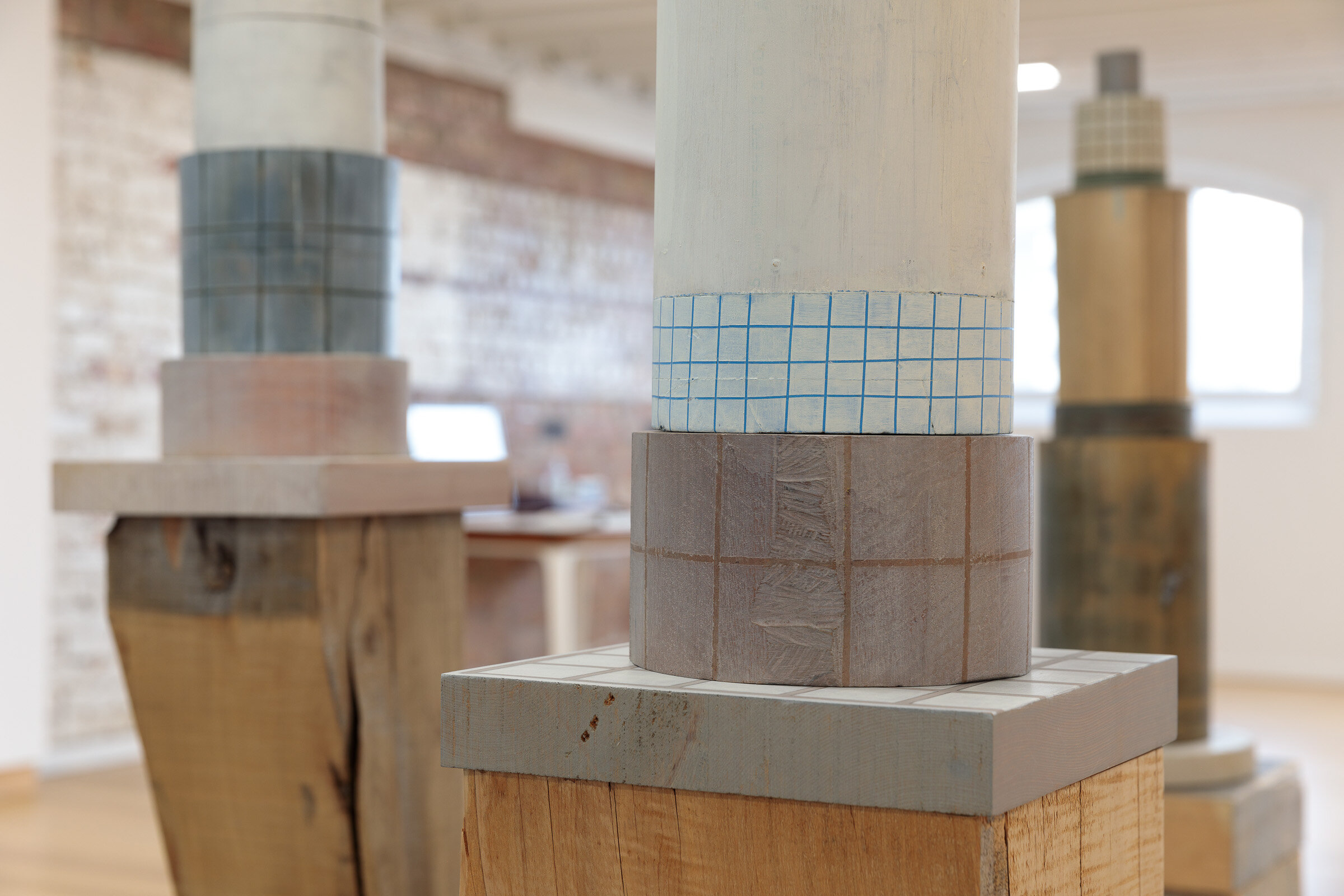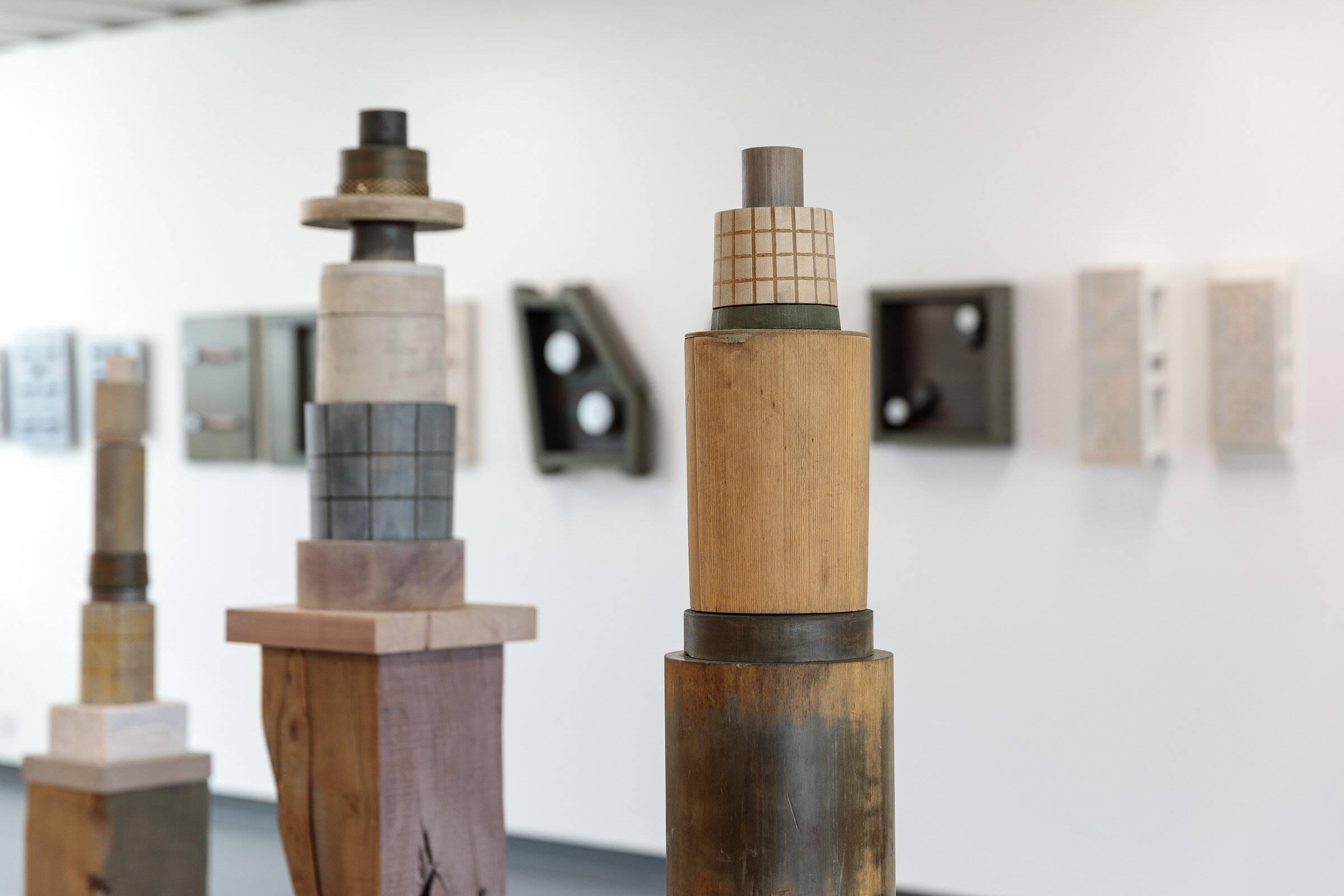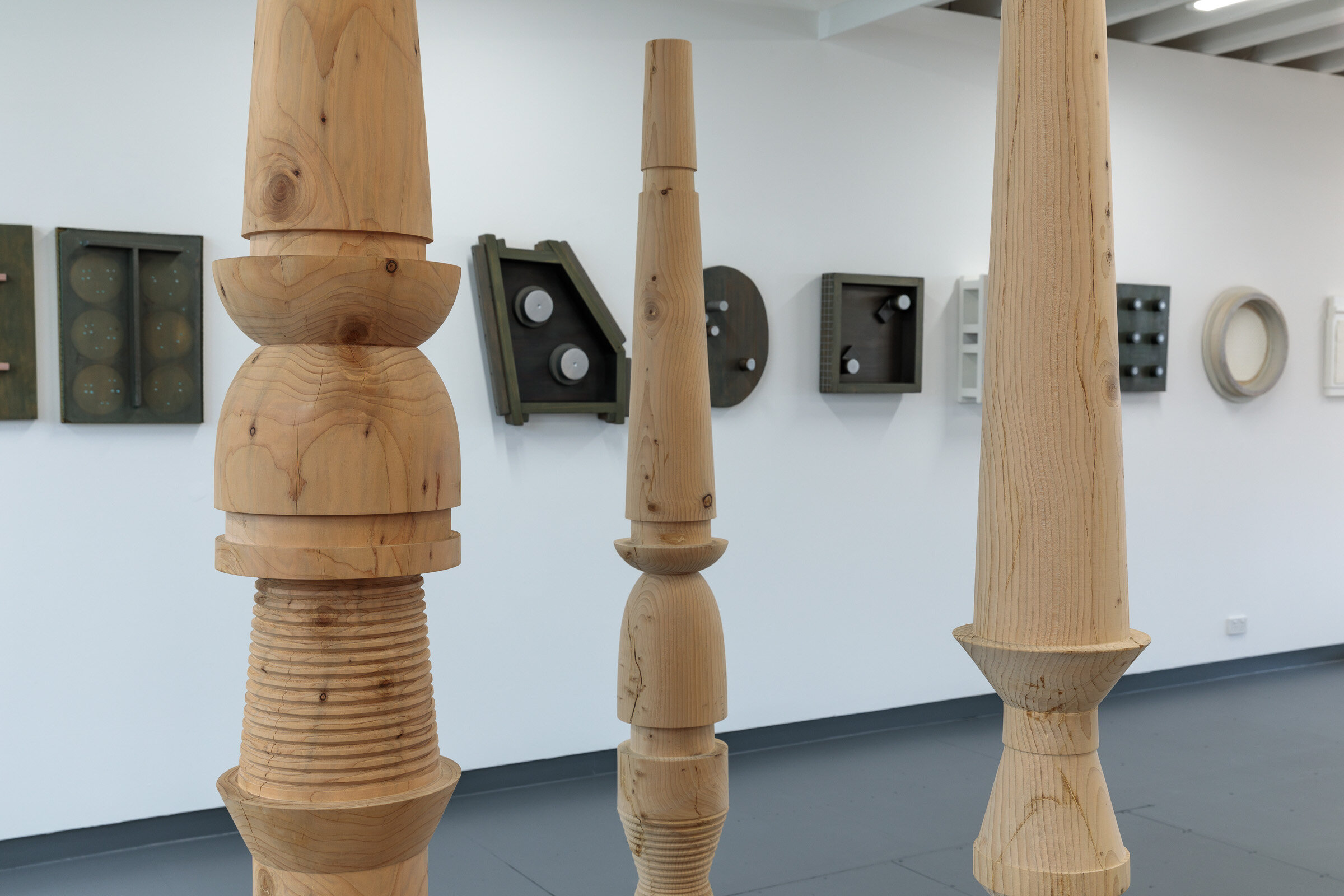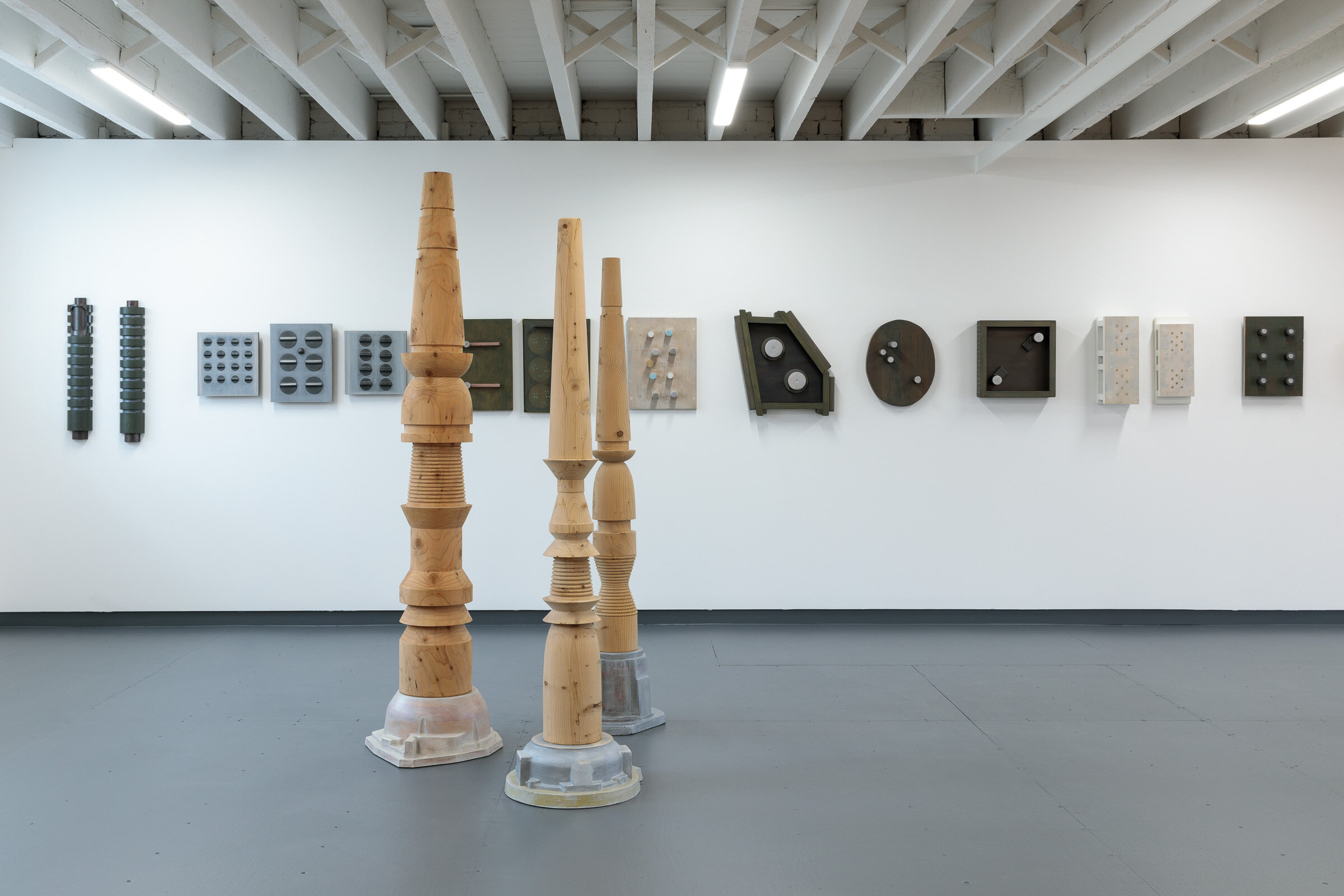JO WILSON: FORM WORK & TOM VINCENT: INTROSPECTION
26.05.21 - 19.06.21
Installation images, Tom Vincent: Introspection, & Jo Wilson: Form Work. Blockprojects, 2021. Images by Mark Ashkanasy & Tom Vincent.
SOLO exhibitions by
Jo WILSON & Tom Vincent
Both artists celebrate the power of imagery using traditional and found materials in a unique and experimental manner, which offers an intuitive and honest experience between the objects and the viewer.
Tom Vincent: Introspection.
”These works have arisen from a way of looking and observing in an attempt to gain an understanding of the nature of myself and the place we find ourselves in. Experimentation and discovery are key drivers to my work, and these are experiences that occur not outside of my body but rather inside my head with my eyes closed as a type of thought experiment or consciousness exploration.
I have been aware of a constant of movement, a constant marching of the natural systems we inhabit most of my life. A cycle or rhythm that at its core is an oscillation between on and off, open and closed. A cycle that, as much as we like to think it, we are not removed from. Through observation of these movements and rhythms of the world I became increasingly aware of the importance of stillness. Seeking to find stillness in a continuous ocean of waves and current has helped me observe what I see both with my eyes open and closed, gaining an insight into my own true nature. These works are made from a point of introspection past what I think I am. The waking, walking, talking and painting human being I think I am. But rather from the point of view inside, underneath the movement and flow at a point of stillness.”
Tom Vincent ARTWORKS:
Jo Wilson: form work
A plastic injection moulding factory in an outer south-eastern suburb of Melbourne seems an unlikely starting point for Jo Wilson’s refined sculptural works. It is this site however, where she maintains a studio and sources most of the elements used in her art, inspired by the sheen of tools and machinery, and the texture of wooden sandcasting moulds, which make up the patina of its industrial landscape. Established and operated by Wilson’s father, Bob, this particular factory is deeply embedded in her being – she has spent many days there over many decades, and in addition to registering the ingenuity and technical skill of its workers, its spaces also conjure up memories of a strong father-daughter bond.
The components Wilson used to make this body of work had been gathered over a number of years, removed from the factory context so that their material qualities – shape, size, colour and so on – could be considered independent of their traditional function. Having a reserve of pieces at home, she was able to work throughout the extended lockdown which Melbourne residents experienced last year. Using what was at hand, without the prospect of being able to add to it, her approach was more playful and she incorporated materials that might otherwise have been discarded. Wilson describes the process of making during this strange time as having a calming effect and there is something meditative in her hand-working of these pieces, from the graphite dust which is rubbed into timber surfaces until they take on the appearance of metal, to the carefully painted grids based on fragments of steel mesh found in the factory. In a series of white works, sheets of paper clay which record the impression of mesh and small pieces of embossed paper (both harking back to Wilson’s experience as a printmaker), embellish sandcasting moulds, creating serene minimal compositions. Particularly prominent in these works is Wilson’s sensitivity to texture, the smooth surfaces of the wall works contrasting against the totems, where the tactile, natural grain of the timbers is highlighted.
The materials and processes used to create these works are many and layered. The end result is simple however, pared back forms constructed from geometric shapes in a limited palette of grey, ‘Wilson Green’ (a bespoke colour mixed to the artist’s specifications) and white, alongside the varied tones of timber. Although the functional purpose of the individual elements Wilson uses is no longer apparent, she celebrates the detritus of industry, acknowledging the workmanship that went into their production as she transforms them into objects of beauty. Fundamentally abstract, these works are rich in meanings that subtly echo with memories of labour, family and creativity – what the artist terms ‘talismans of the past.’
KIRSTY GRANT
